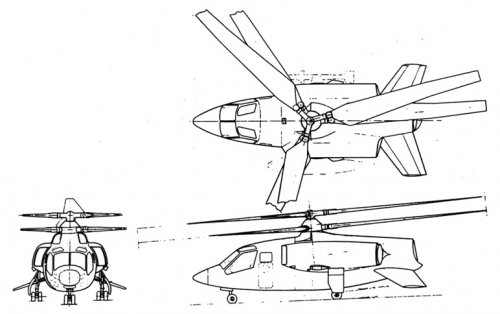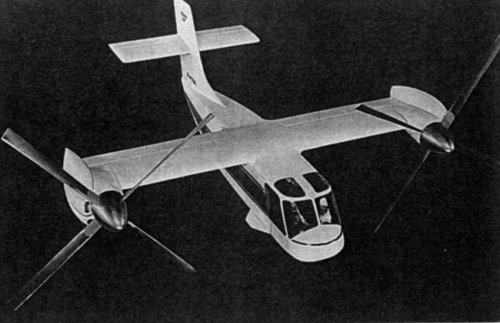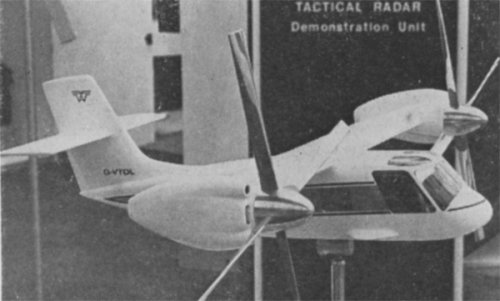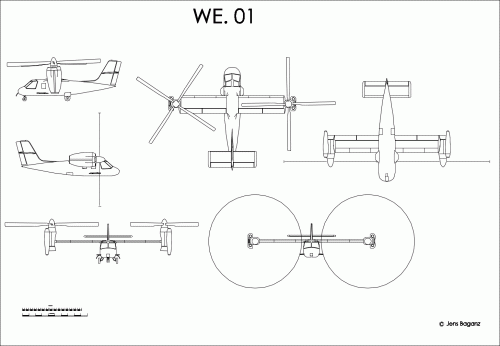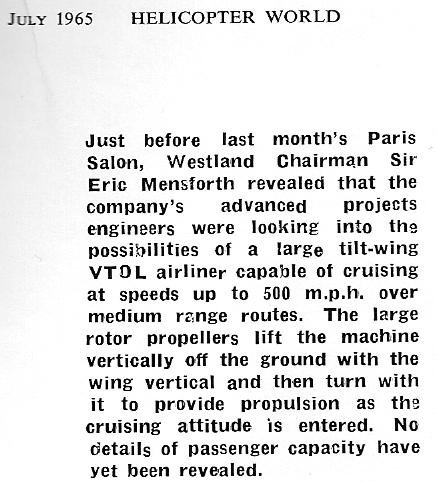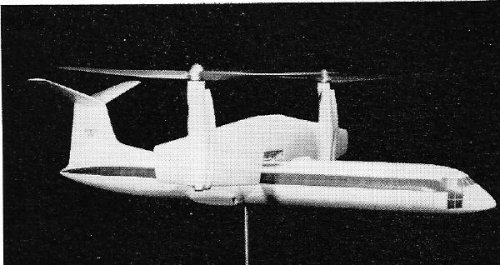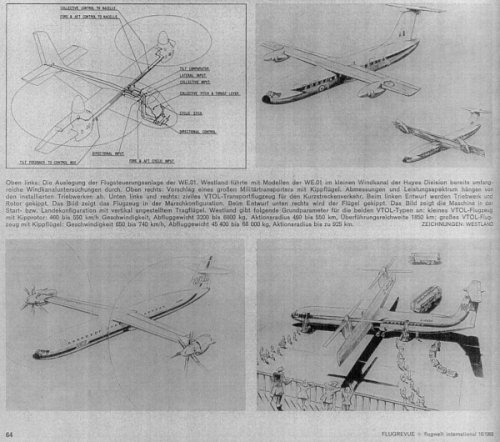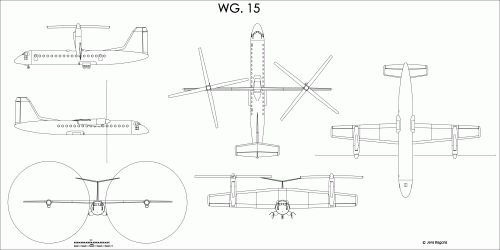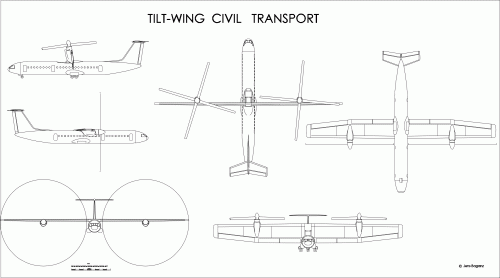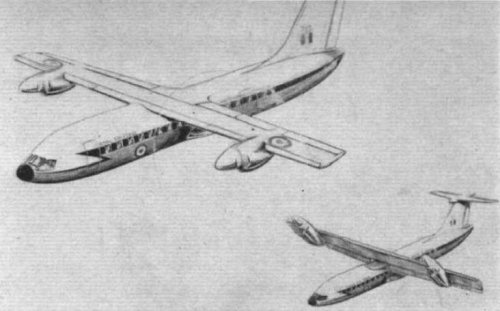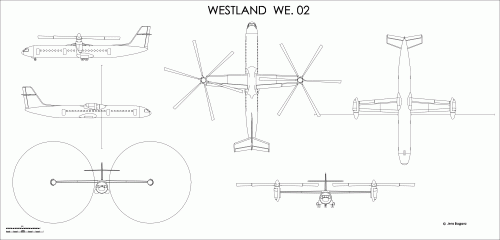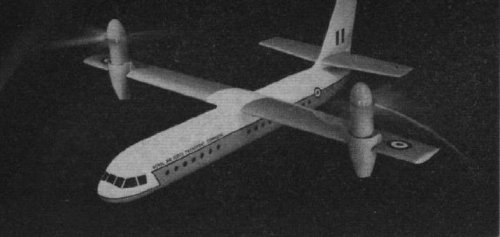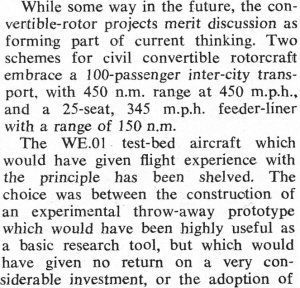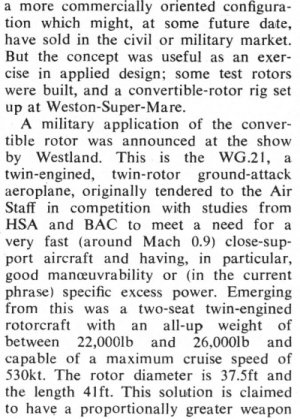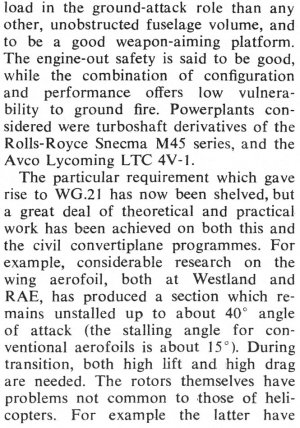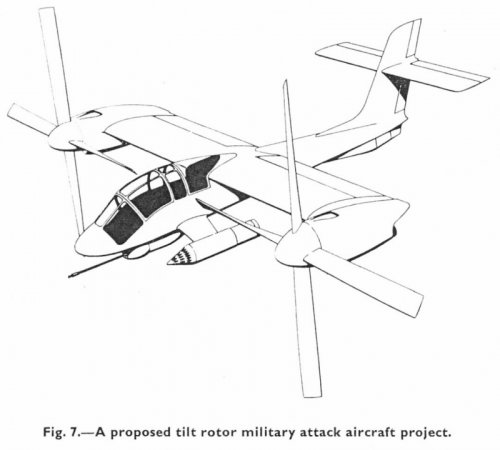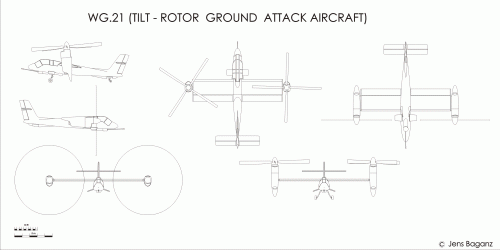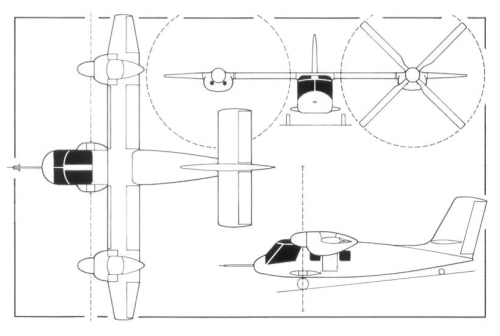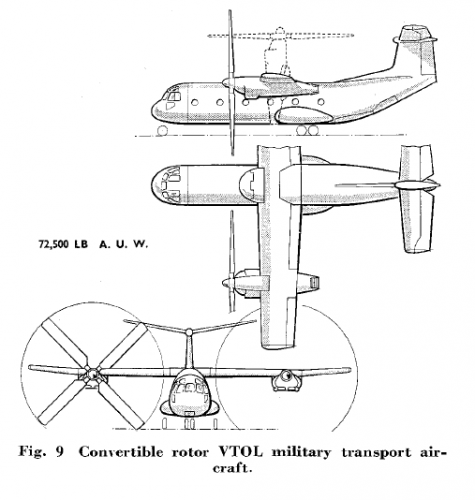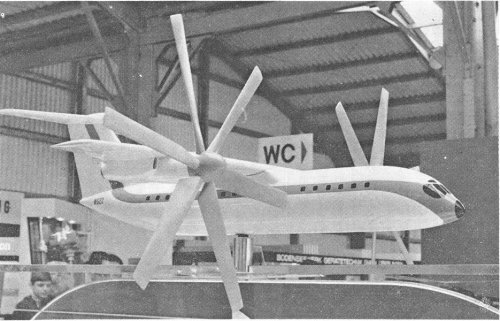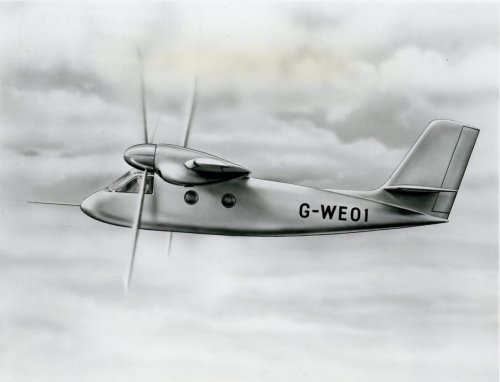- Joined
- 27 December 2005
- Messages
- 17,712
- Reaction score
- 26,185
WESTLAND WG.22
The WG.22 consists basically of a wide-body fuselage design, carried by a tilting wing and a rotor system. For take-off, the wing is in the vertical position, and the aircraft takes off and climbs vertically in the manner of a twin-rotor helicopter. For transition into forward flight the wing is inclined forwards, the load being shared by the wings and the rotor system until, about one minute after take-off, the aircraft has converted fully to wing-borne forward cruising flight.
The basic version proposed has a circular-section fuselage of 12 ft 0 in (3-66 m) diameter, seating up to 100 passengers in a six-abreast layout. Alternatively, a wider-bodied fuselage of 14 ft 11 in (4-55 m) width can be employed, seating the same number of persons in a mainly seven-abreast layout but offering increased underfloor space for the carriage of freight.
The description below applies to the six-abreast version, except where otherwise indicated.
Type: Tilt-wing inter-city VTOL transport aircraft.
Wings: Cantilever high-set tilting wing, of constant chord over most of span, with tapered outer panels. Conventional single-cell two-spar torsion-box structure, built mainly of aluminium alloy with local use of titanium alloy for areas of high stress (i.e. wing root ribs). Skin panels inboard of engine nacelles formed by machining and chemical etching, those outboard of the nacelles being of conventional distributed flange construction using riveted Z-section stringers. Wings are designed to give high-incidence stall during transitional manoeuvres, high lift being achieved by tilting down the entire wing leading-edge by 30° about a hinge-line just forward of 25% chord at the base of the front spar. In the extreme nose-down position, a "pop-up" vane is released automatically, which delays separation of the boundary layer on the now highly-curved upper surface. The action of this device does not involve any forward extension of the leading-edge, thus avoiding extension of the nacelle to maintain rotor clearance. Split trailing-edge flaps, deflecting 60° downward, inboard of each nacelle, and flaperons outboard. The wing is hinged at the rear spar, and can be rotated through approx 90° (maximum 100° at low speeds) by means of two independent hydrau-lically-operated harmonic drive units, one at each hinge joint. Either unit can operate the mechanism if the other becomes inoperative. Automatic down-lock on each wing, at front spar.
Fuselage: Conventional all-metal semi-mono-coque structure, with frames at 16 in (41 cm) pitch. Main lift frame and surrounding skins, immediately below the wing hinge point, have considerable stiffness so as to diffuse into the fuselage the whole of the wing lift when the wing is not locked down. Fuselage is of circular cross-section, comprising a main pressurised shell which incorporates the flight deck and passenger cabin (with an unpres-surised cut-out for the nose-wheel well). Passenger cabin floor built of honeycomb sandwich panels, mounted on a conventional underfloor structure. Unpressurised freight holds underneath cabin.
tail Unit : Cantilever T-tail, comprising a conventional fin and rudder, hydraulically-actuated movable tailplane and normal elevators.
Rotor System: Each pair of engines drives a single six-blade main rotor. Blades are of NACA 64A series section, and are slightly tapered. Each blade is rigid in the lag plane, is controllable in pitch, and is free to flap in the lift sense about a hinge offset 6-5% from the rotor centre-line. Structure of each blade comprises a carbon fibre reinforced plastic spar, with stainless steel erosion shield on front portion, and leading- and trailing-edge boxes of glass-fibre. Honeycomb filler in trailing-edge box. Electrical de-icing of leading-edges. Titanium rotor hubs each attached to a gearbox through a flange and ring of bolts at its base. Flap hinge axes at 18 in (46 cm) radius, each hinge unit terminating in a bolted flange to which the respective blade unit is attached.
Rotor Drive: Power is supplied to each rotor by two engines mounted in a single nacelle and driving transmission shafts to a rotor/ engine reduction gearbox at the front of each nacelle adjacent to the rotor hub. In the event of an engine failure, power is transmitted through a cross-shaft installed in the wing and connected to the respective gearboxes in each nacelle to equalise power between the rotors. This shaft is also used to transmit limited differential rotor power for control purposes. Accessory power take-offs at rear of each main rotor gearbox for wing services, and from an accessory gearbox in wing centre-section, near rear spar, for fuselage services. The latter gearbox is driven by a shaft connected to the rotor cross-shaft by bevel gears. Engine/rotor rpm ratio of approx 50 : 1. landing Gear: Retractable tricycle type, with twin wheel nose unit and four wheel main units. All units retract forward into fuselage
and have same-size wheels and tyres, size 25 X 7-75, pressure 122 lb/sq in (8-6 kg/cm2). Fully-castoring nose unit.
Power Plant: Four Rolls-Royce RB.411-01 or Lycoming LTC4V-4 turboshaft engines, each developing approx 9,450 shp maximum (6,580 shp normal rating) and mounted in side-by-side pairs in single nacelle under each outer wing, each pair driving one of the six-blade main rotors. Nominal fuel capacity 2,000 Imp gallons (9,092 litres), contained in four integral tanks in wings.
Accommodation : Crew of two on flight deck, immediately aft of which is a 25.5 sq ft (2.37 m2) area for additional instrumentation (stbd) and access to crew members' emergency exit (port). Aft of flight deck bulkhead is main cabin, with accommodation in two compartments for up to 100 passengers (30 forward, 70 aft) in six- or seven-abreast seating, with pantry units between compartments. Seats in both compartments are at 32 in (81 cm) pitch. Two passenger toilets aft of rear compartment. Passenger entry doors on port side at front, with toilet opposite on stbd side, and opposite central galley area. Emergency exits at front on stbd side and on both sides of aft compartment. Two underfloor freight holds, the larger forward hold being of constant section and having three loading doors (two stbd, one port). Rear hold has single hatch on stbd side.
Systems : Main fuselage shell pressurised to withstand max differential of 5 lb/sq in (0.35 kg/cm2) at 20,000 ft (6,100 m). Hydraulic system for actuation of wing-tilting mechanism, flying controls and landing gear. Rectified constant-frequency AC electrical system incorporates two 40kVA 115/200V three-phase 400 Hz alternators in wing centre-section driven from centre accessories gearbox.
Third identical unit in tail driven by APU. DC system supplied via transformer-rectifiers. Two 25Ah lead-acid batteries for APU starting and emergency standby. System includes inverter to provide 115V 400Hz for essential services. Garrett GTCP 165/4 APU for cabin air-conditioning on the ground. Cooling of supply air by bootstrap air-cycle systems, each comprising two heat exchangers, a cold air unit, water separators and control valves. 28V DC ground supply can be connected in the battery compartment to start the APU.
Dimensions, external:
Rotor diameter (each) 48 ft 6 in (14.78 m)
Rotor blade chord at root 3 ft 12in (1.21 m)
Rotor blade chord at tip 3 ft 2in (0.96 m)
Wing span 101 ft 11 in (30.82 m)
Wing aspect ratio 7.4
Fuselage length 92 ft 0 in (28.04 m)
Fuselage width (6-abreast layout)
12 ft 0 in (3.66 m)
Fuselage width (7-abreast layout)
14 ft 11 in (4.55 m)
Wheel track 16 ft 8 in (5.08 m)
Wheelbase 40 ft 8 in (12.40 m)
Crew emergency exit (fwd, port):
Height 2 ft 2 in (0.66 m)
Width 1 ft 7 in (0.48 m)
Dimensions, internal:
Underfloor freight hold (fwd):
6-abreast version 500 cu ft (14.16 m3)
7-abreast version 950 cu ft (26.90 m3)
Underfloor freight hold (aft):
6-abreast version 260 cu ft (7.36 m3)
7-abreast version 230 cu ft (6.51 m3)
Areas :
Wings, gross 1,387 sq ft 85 (1.28m2) [this is a typo]
Vertical tail surfaces (total) 294 sq ft (27.31 m2)
Flying Review International, July 1970



